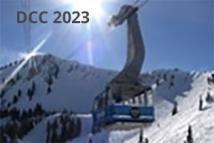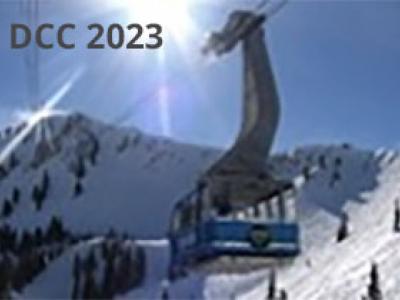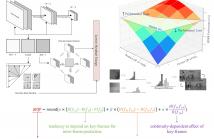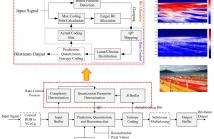
DCC 2023 Conference - The Data Compression Conference (DCC) is an international forum for current work on data compression and related applications. Both theoretical and experimental work are of interest. Visit the DCC 2023 website.

In the development of video coding standard, decoder-side motion derivation technology has been proven to provide promising coding efficiency. With this type of technology, the motion information is derived at the decoder instead of being signaled in the bitstream by the encoder, and thus, the number of bits to be sent are reduced. A typical decoder-side derivation technology is template matching, which refines the motion by finding the closest match between neighboring reconstructed samples and corresponding reference samples in the reference pictures.
- Categories:
 53 Views
53 Views
- Read more about An Adaptive Intra-frame Quantization Parameter Derivation Model Jointing with Inter-frame Analysis
- Log in to post comments
This paper proposes a novel quantization parameter (QP) derivation module that constructs several spatiotemporal characteristics into key-frame QP determination through an efficient pre-analysis progress. A series of simplified prediction modes and a histogram statistic are employed to model the reference quality that key-frames provide to subsequent frames. An adaptive delta-QP value is generated to address the conflict between the low compression efficiency of intra-only frames and the critical predictive basis of temporal-underlying frames.
- Categories:
 38 Views
38 Views
- Read more about An Efficient Rate Control Scheme for Video Compression in Low-latency Interoperable Interfaces
- Log in to post comments
Lightweight video compression has effectively alleviated the tension between growing transmission demands and expensive integration upgrades. Effective rate control algorithms are believed to be the crucial bottleneck for quality improvement during those ultra-high throughput coding processes. This paper proposes a novel rate control (RC) scheme that constructs a contextual adaptive bit estimation model through clustering historical compression information into block-gradient complexity categories.
- Categories:
 28 Views
28 Views
This paper proposes an effective universal "on-the-fly" mechanism for stochastic codebook generation in lossy coding of Markov sources.
- Categories:
 25 Views
25 Views
The new coding tools improved the performance for H.266/VVC but also brought challenges for hardware integer motion estimation (IME). First, the data dependency in deriving a predicted motion vector (PMV) is more severe. Second, the overhead of IME is increased by the complex partition mechanism. The challenges are tougher for IME in coding tree unit (CTU) level pipelined encoder. In this paper, we propose a hardware-friendly CTU-level IME algorithm with three innovative designs. First, a PMV prediction is proposed to derive PMVs in advance.
- Categories:
 63 Views
63 Views
Recently, Quantum Annealing (QA) has attracted attention as an efficient algorithm for combinatorial optimization problems. In QA, the input data size becomes large and its reduction is important for accelerating by the hardware emulation since the usable memory size and its bandwidth are limited. The paper proposes the compression method of input sparse matrices for QA emulator. The proposed method uses the sparseness of the coefficient matrix and the reappearance of the same values.
- Categories:
 24 Views
24 Views
- Read more about Learning to Compress Unmanned Aerial Vehicle (UAV) Captured Video: Benchmark and Analysis
- Log in to post comments
DCC-slides-clean.pdf
- Categories:
 14 Views
14 Views
- Read more about Temporal Down-Sampling Based Video Coding with Frame-Recurrent Enhancement
- Log in to post comments
In many digital systems, the transmission bandwidth, as well as storage capacity, are usually very limited. This introduces challenges for both video transmission and video storage. One of the efficient solutions to this problem is to compress the down-sampled frames and then process up-sampling/super-resolution after decoding. To seek lower bit rates and further obtain high-quality up-sampled videos, this paper proposes a temporal down-sampling based
video coding system and a frame-recurrent enhancement based video upsampling strategy.
- Categories:
 33 Views
33 Views
- Read more about Zigzag Ordered Walsh Matrix for Compressed Sensing Image Sensor
- Log in to post comments
In compressed sensing (CS) based CMOS image sensors (CS-CIS), the ternary measurement matrix determines the compression performance in terms of decoded image quality versus sampling rate (data rate).In this paper, we propose a structured measurement matrix called Zigzag ordered Walsh matrix (ZoW). Firstly, the Walsh matrix is divided into several measurement patterns.
- Categories:
 55 Views
55 Views
- Read more about Occupancy Map Guided Attributes Deblocking for Video-based Point Cloud Compression CONTENT VIDEO
- Log in to post comments
- Categories:
 51 Views
51 Views